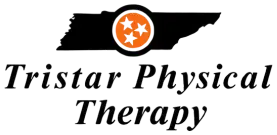Table of Contents
- The knowledge they use to assess patients
- What physical therapists assess and how they assess it
- How physical therapists use assessment details to create a treatment plan
- How physical therapists present treatment plans to patients
If you have never done physical therapy before, you may think that all patients at PT get the same exercises. How does the physical therapist watch you walk, stand up, sit down, listen to your history, and create a personalized plan to help you reach your goals and feel better? While it may seem like magic, physical therapists possess a wealth of knowledge and skills that help them understand how to help you reduce pain, improve mobility, and get back to your favorite activities. This article discusses how physical therapists do what they do, including:
The knowledge they use to assess patients
Any practicing doctor of physical therapy has at least seven years of schooling and multiple state board exams under their belt. In those years and classes, they learn how to watch a patient move and prescribe treatment based on deficits they observe. Here are a few areas of study physical therapists must understand to do their job well:
- Anatomy and physiology: The structures of the human body and how they work together for overall health
- Biomechanics: How the body moves
- Pathophysiology: Understanding various medical conditions and their impact on the body
- Musculoskeletal assessment: The ability to perform accurate checks of joint range of motion, muscle strength, and soft tissue integrity
- Neurological assessment: For patients with neurological conditions or injuries, the physical therapist must be able to assess motor function, sensory deficits, reflexes, and balance.
- Exercise science: Knowledge of exercise principles and the body’s response to physical activity
- Manual therapy techniques: Proficiency in various manual therapy
- Pain management: Understanding pain mechanisms and various pain management techniques
- Treatment modalities: Familiarity with different therapeutic modalities, such as ultrasound, electrical stimulation heat/cold therapy
- Patient education: The ability to communicate effectively with patients, explaining their condition and treatment plan, and providing guidance for home exercise programs
- Medical imaging and reports: Interpreting medical imaging
- Pharmacology: Understanding the potential effects of medications
What physical therapists assess and how they assess it
The primary areas that your physical therapist will assess take their knowledge and the patient’s history into consideration. These are the areas they observe:
- Pain management
- Mobility and range of motion
- Strength and endurance
- Balance and coordination
- Posture
- Sports rehabilitation (if the patient is an athlete or has goals related to returning to sport)
- Gait
- Neurological recovery
- Cardiovascular conditioning
- Patient education/home exercise programming
- Functional training
- Ergonomics
Now that we know the areas your physical therapist will look at during your assessment, let’s review the evaluation itself. Here is a typical timeline:
- Patient history: including current and past injuries, medications, home life, occupation, etc.
- Physical examination: Movement assessment, gait, range of motion, flexibility, balance, coordination, and posture also observe how they perform specific tasks.
- Pain assessment: location, intensity, and nature of the patient’s pain
- Functional assessments: functional assessments evaluate a patient’s ability to perform daily tasks and activities related to their condition.
- Palpation: to identify areas of tenderness, muscle tightness, or other soft tissue abnormalities
- Neurological examination: specific neurological assessments to evaluate motor function and reflexes if needed.
- Specific outcome measures: There are several standardized outcome measures and questionnaires that physical therapists use to assess a patient’s progress over time and to track treatment effectiveness.
How physical therapists use assessment details to create a treatment plan
When you come to physical therapy, you should be treated as an individual and more than just your chief complaint. When forming a treatment plan, your PT needs to know about you – what your life outside of this visit looks like, how much stress you are under, and how busy your days are. Your goals should be at the center of any treatment plan – it is the physical therapist’s job to get you back to your fullest potential and achieve the goals you have set for yourself. It is difficult to discuss a typical treatment plan since the primary purpose of physical therapy is individualization. However, we can review what elements of the treatment plan are based on.
Treatment plans are always based on a combination of patient goals and the physical therapist’s assessment results. Any goals are always SMART (specific, measurable, achievable, relevant, and timely). Typical goals generally include:
- Pain reduction
- Improved range of motion
- Increased strength and endurance
- Enhanced balance and coordination
- Restoration of functional mobility
- Optimizing posture
- Promotion of independence
- Patient education
- Improving quality of life
After your assessment, your physical therapist will generate a broad plan based on symptoms, movement, and pain. The first goal is always to reduce pain, which can vary from person to person. Once pain is resolved, the general purpose is to establish proper movement patterns and improve mobility. Following that, increasing strength and returning to sport/ADLs (activities of daily living) is the most important.
How physical therapists present treatment plans to patients
A general progression of a treatment plan is presented and explained to the patient at the end of the first visit. As with any plan, it is subject to change throughout the treatment timeline, as what a patient does in between visits can provide more information and response to activity.
Rarely is a treatment plan fully formed on the first visit – it takes time to figure out what works and what doesn’t because everybody is unique. As the patient, you should be fully involved in creating and implementing your treatment plan throughout your time with your therapist. Our team at EW Motion Therapy works with patients every step of the way, ensuring their treatment plan is best optimized for their needs and goals. If you’re curious about what else physical therapy can do for you, click the button below to download our answers to 20 frequently asked questions.

